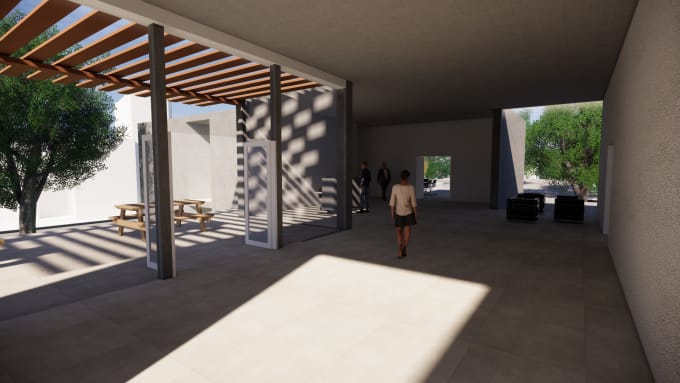
Not as well integrated into Archicad especially when it comes to material workflowsģ. Light View Mode – this mode conveys a lot of information about lighting in the scene and can be used to study/simulate various lighting conditions.ġ. Faster & Easier Walkthrough Video ProductionĤ. Cross-Platform Support for Rhino & Archicadģ. Ability to render Material ID & Depth Passes, this saves us a lot of time in post-production while making masks for various materialsĢ.

To summarize, let’s look at some advantages and disadvantages of Enscape compared to Twinmotion and Vray :ġ. There are still a few bugs with the camera paths but I expect these will get fixed in the future updates. This is often a requirement from our clients at various stages in the design process and we’ve spent a fair amount of time trying to make this happen as smoothly as possible. This requires very little post-production in the studio allowing us to spend more time on the design and solving design problems rather than technical ones.Īnother major advantage I found working on Enscape is how quick and easy it is to make and render a walk-through video. To access either of these files, We do not need to have Enscape installed on the computer. We can also just as easily deploy this model on the web and send a link to someone who can navigate through the project online. This means that as a small studio working on a project, we can very quickly create a Windows Executable file that can be shared with our clients allowing them to navigate through this virtual project. Another core functionality, which, unfortunately, I haven’t managed to test yet is VR Functionality. What surprised me the most while testing Enscape with both Archicad and Rhino over the last few weeks was the speed, good library of assets, ease of use, easy web and windows app deployment. More recently, we’ve been experimenting more and more with Vray for Rhino as it is very well integrated into the Rhino & Grasshopper environment.Īll of these software have their pros and cons.

Over the last few years, we’ve used TwinMotion as a primary visualization tool because of its ease of use and integration into the Archicad environment.

Normally, we work between Archicad and Rhino3D and often have cross-platform issues. As discussed in the article before, I would classify Enscape as fairly easy to use, intuitive software to produce some good images with very little effort. Understanding where we are in terms of Architectural Visualization tools, I would like to talk about how we address photorealistic rendering at Enzyme. This is the second article in a series where we talk about Architectural Visualization in the context of our work at Enzyme.


 0 kommentar(er)
0 kommentar(er)
